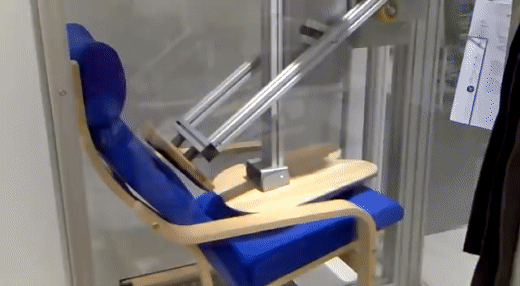Last week I subscribed to a fresh newsletter called Sitting Pretty. If you’re into “chairs, design and other things”, check it out. It got me thinking about what would be a Considered chair? There are the design classics from Bertoia, Breuer, Eames, Le Corbusier, Knoll or Wegner, but I have a soft spot for some of the more “everyday” (affordable) icons, like IKEA’s POÄNG armchair.
The story behind this humble classic is an example of IKEA’s commitment to Democratic Design - “Making great design available to everyone”. As Sarah Fager (a Canadian born Senior Designer at IKEA) explains,
“Democratic Design is a tool we use when we develop and evaluate the products we put into our range. It has five dimensions, which are function, form, quality, sustainability and low price. When there is a balance between all five, we consider that the design is democratic.”
Sounds like a pretty Considered combination to me.
Design
The origin story of the POÄNG chair can be traced back to two people: Noboru Nakamura (a designer) and Lars Engman (a product manager) at IKEA. A quirky video from IKEA Austria dramatizes how they, in 1976 as two new IKEA employees, collaborated on a design for a bentwood armchair called the POEM.
Noboru was interested in creating a chair that would be dynamic and “swing in an elegant way”. He believed:
“A chair shouldn’t be a tool that binds and holds the sitter; it should be a tool that provides us emotional richness.... we let off stress or frustration by swinging. Such movement has meaning and value.”
Good vibes Noboru!
Eventually renamed from POEM to POÄNG (Swedish for “point”!), the armchair embraced existing design forms and construction methods of other iconic chairs. The use of bentwood, laminated together for strength and flexibility, echoed elements of Alvar Aalto’s 406 chair (1939)... which appears to have been inspired by Marcel Breuer’s Cesca chair (1928). While we are at it, let’s also give some credit to the grandma of all bentwood chairs: Thonet’s “No. 14” bistro chair (1859), the world’s first commercially produced bentwood chair.
After more than 40 years in production, with over 30 million units sold (and still selling +1.5 million units per year), the POÄNG has established itself as a perennial consumer favourite and is one of IKEA’s longest continuously produced designs out of their +9,000 products.
Innovation
The design of the POÄNG has largely stayed the same except for a few modifications that have reduced the manufacturing cost (replacing a metal rod with wood) and have enabled it to be packed and shipped in an even more efficient manner (26 chairs per pallet instead of 12!).
The website FiveThirtyEight, has a fascinating analysis into The Weird Economics Of IKEA, and how they have been able to lower the cost of the POÄNG chair by ~20% from its debut price. The decline is even more staggering if you account for inflation during the same time period. The article shares insight from Boston University Economist Marianne Baxter who sums the phenomenon up with:
“I think this is a pattern for products that survive for a long time… Basically, they won’t survive unless they’re cost effective. I think the economies of scale really kicked in for that chair… If they can’t figure out how to make them more cheaply, or retool them or slightly redesign them, it seems like the things disappear (from the catalog)”.
This type of deflation is something we are used to seeing in technology or electronics, but is rarer in other categories of goods, like furniture or food. In the case of the POÄNG, human ingenuity and IKEA’s drive for democratizing design have tamed common inflationary pressures.
Sustainability
Looking into the sustainability story of the POÄNG chair led me down a dizzying rabbit hole of IKEA’s sustainability disclosure. After reviewing their 84 page 2020 Sustainability report, their 19 page Sustainability Strategy and numerous sections of their website, it struck me how far IKEA stands out for its transparency and bold ambition of wanting “to have a positive impact on people, society and the planet”.
However, given IKEA’s size and massive product range, they tend not to disclose individual manufacturing details, like the factory location. Instead you need to buy into the sustainability story of the whole company/brand. IKEA does disclose the POÄNG’s materials: “Frame: Molded layer-glued wood veneer with surface of Birch veneer, Clear acrylic lacquer. Armchair cushion: Back and seat filling, Polyurethane foam. Fabric, 100% polyester (min. 90% recycled)”. They also note the wood is “predominately” FSC (Forest Stewardship Council)-certified.
Thinking about product durability and “end of life,” IKEA has long used the POÄNG as a symbol of their commitment to durability. Since 1978, they have displayed pneumatic contraptions in their stores that rhythmically pound a POÄNG 20 times per minute with the force equal to a person sitting down for a total of 50,000 cycles. Assuming you sit in your chair at home 5 times per day, this is the equivalent of ~27 years of use! It’s also covered by a 10-year warranty.
Impressively, IKEA has recently introduced a “Sell-Back” program where you can return select categories of furniture, in exchange for a store credit (at a percentage of the original price). IKEA then finds alternate uses for the furniture, either by selling it in their “As-Is” section of the store, or by donating it into the community. Since 2018, IKEA Canada has received more than 33,000 submissions for this program.
Value
The price of a POÄNG chair in Canada starts at ~$89, compared to the price of Artek’s Alvar Aalto 406 which is +20x the price at $2,000! If you’re looking to snag one even cheaper, of course Kijiji or Craigslist has an abundance available around $20-50. Even the POÄNG isn’t immune to knock-offs and you can find them on Alibaba for as low as $18 if you buy in bulk.
Thanks for making it to the end this week! As always, if you’ve enjoyed what you’ve read, hit the 🖤 button below. And if you happen to already be a POÄNG superfan and would love to see it immortalized as a LEGO set, check out this LEGO IDEAS proposal and give it a vote!









